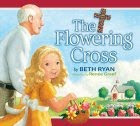Ruth Livingstone is sent away from her home and her father after he is falsely accused of murder. Taking the name of Widow Malloy and the young child belonging to the murdered woman, Ruth moved to live with Elias and Phanaby Garner. Her time in the village is far from peaceful due to its division among three difficulties: taking care of a young child, avoiding reporters, and anxiously awaiting news of her father's trial. Losing her father and finding a new relation turns Miss Livingstone's life upside down. Depite the difficulties and tragedies, Ruth finds love in the unexpected person of an undercover newspaper spy.
Love's First Bloom is an intriguing story of the courage that honest love requires. Ruth Livingstone and Jake Spencer discover that true love is always honest, and that truthfulness breaks down the barriers between people. The unfortunate relationship between Reverend Livingstone and fallen angel Rosalie Peale adds an elemest of suspense to the romance of Parr's book, while the mysterious Captain Grant takes an unaccounted for interest in everything surrounding their case. I would recommend Love's First Bloom, by Delia Parr, to anyone who is looking for a clean and entertaining Christian novel that validates moral truths.
I received this book free from Bethany House Publishers as part of their book review bloggers program. I was not required to write a positive review. The opinions I have expressed are my own.










